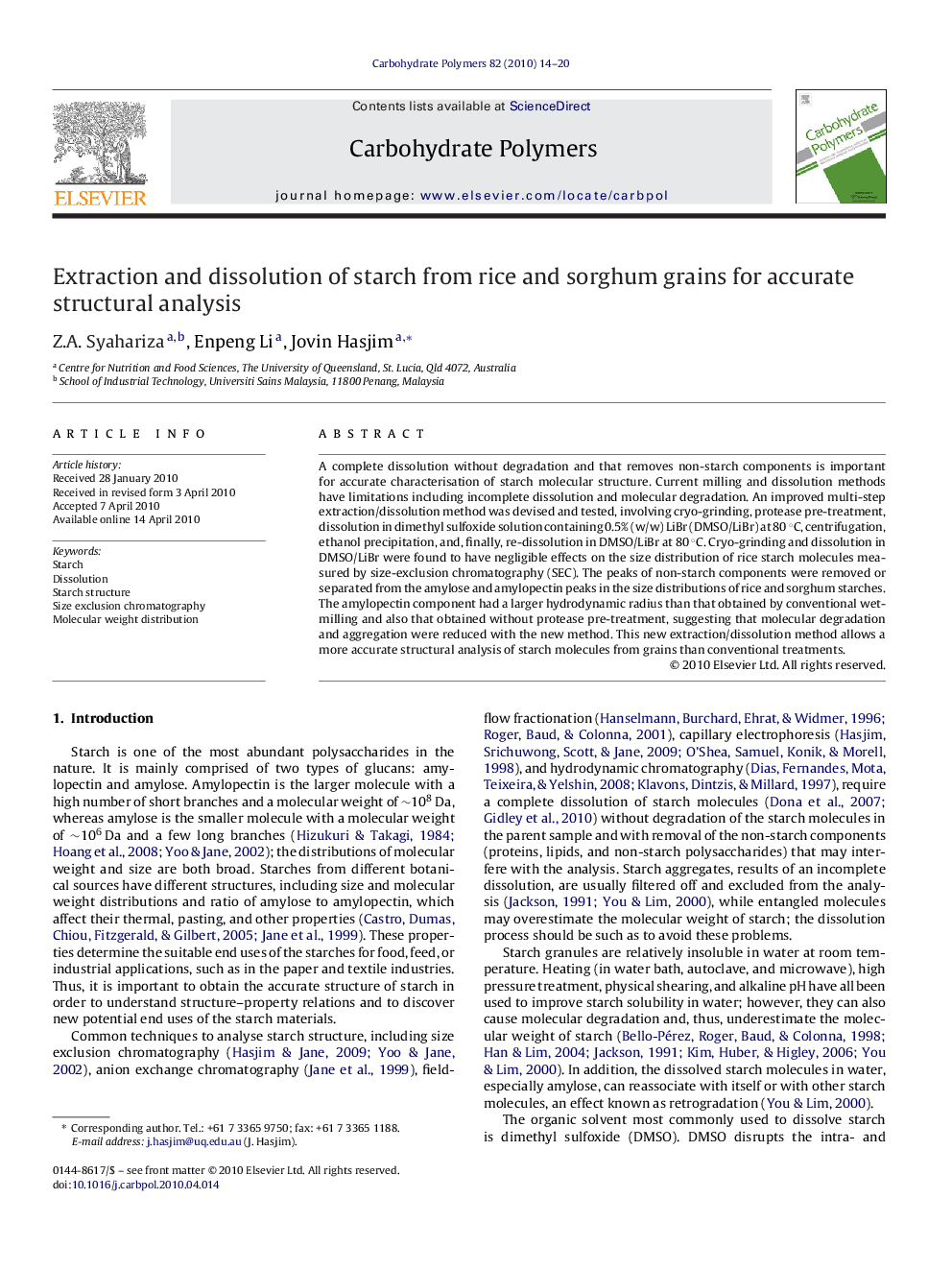| Article ID | Journal | Published Year | Pages | File Type |
|---|---|---|---|---|
| 1387129 | Carbohydrate Polymers | 2010 | 7 Pages |
A complete dissolution without degradation and that removes non-starch components is important for accurate characterisation of starch molecular structure. Current milling and dissolution methods have limitations including incomplete dissolution and molecular degradation. An improved multi-step extraction/dissolution method was devised and tested, involving cryo-grinding, protease pre-treatment, dissolution in dimethyl sulfoxide solution containing 0.5% (w/w) LiBr (DMSO/LiBr) at 80 °C, centrifugation, ethanol precipitation, and, finally, re-dissolution in DMSO/LiBr at 80 °C. Cryo-grinding and dissolution in DMSO/LiBr were found to have negligible effects on the size distribution of rice starch molecules measured by size-exclusion chromatography (SEC). The peaks of non-starch components were removed or separated from the amylose and amylopectin peaks in the size distributions of rice and sorghum starches. The amylopectin component had a larger hydrodynamic radius than that obtained by conventional wet-milling and also that obtained without protease pre-treatment, suggesting that molecular degradation and aggregation were reduced with the new method. This new extraction/dissolution method allows a more accurate structural analysis of starch molecules from grains than conventional treatments.
